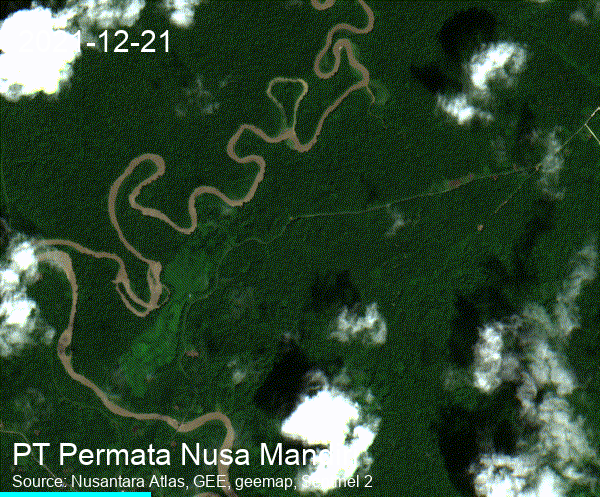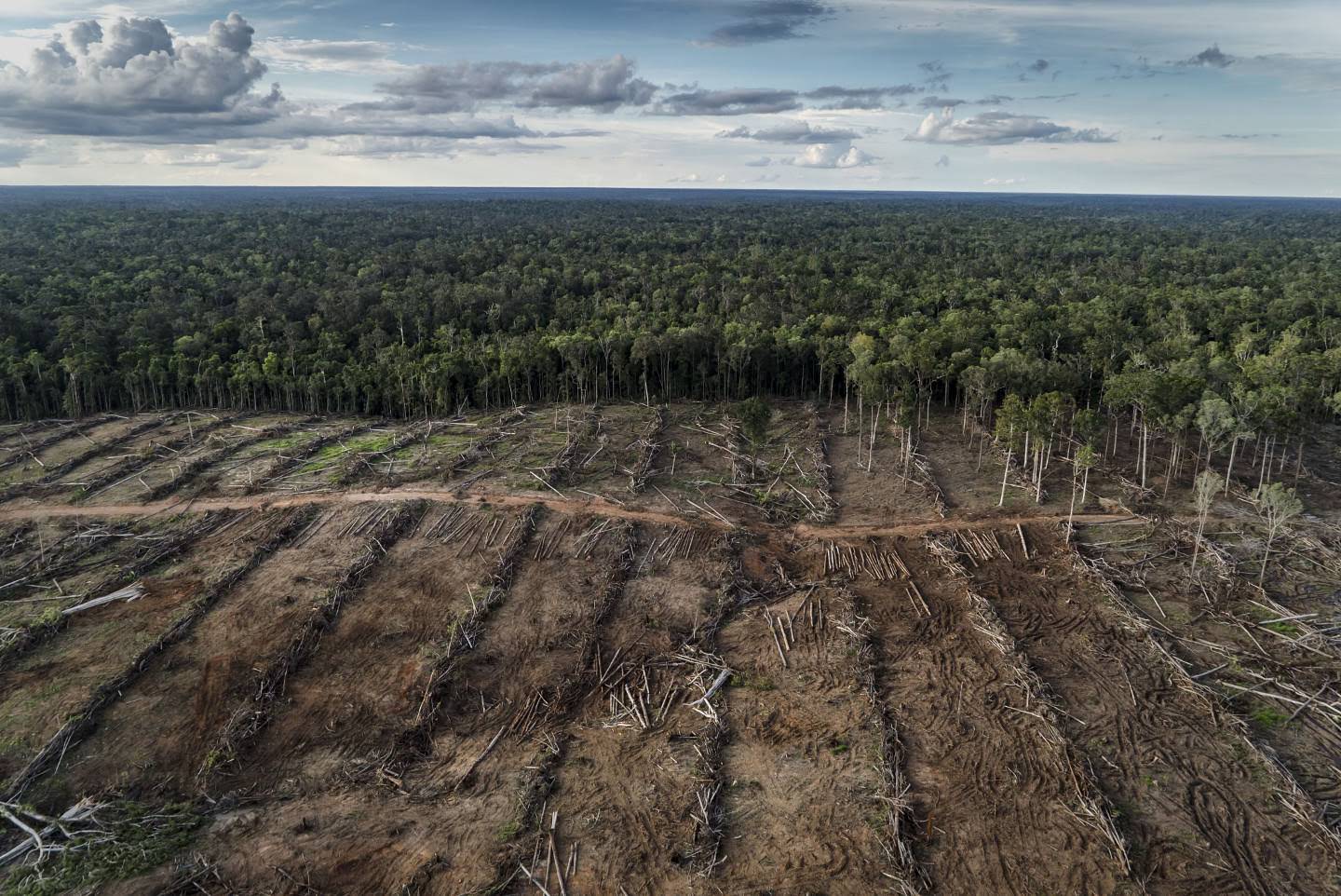 VIEW IN ATLAS Time lapse animation of Sentinel-2 imagery in natural colors (10 m x 10 m) reveals a nework of roads laid out in grids carving through the forest followed by clearing
VIEW IN ATLAS Time lapse animation of Sentinel-2 imagery in natural colors (10 m x 10 m) reveals a nework of roads laid out in grids carving through the forest followed by clearing Oil Palm company clears forests in Papua despite permit being revoked
 VIEW IN ATLAS Time lapse animation of Sentinel-2 imagery in natural colors (10 m x 10 m) reveals a nework of roads laid out in grids carving through the forest followed by clearing
VIEW IN ATLAS Time lapse animation of Sentinel-2 imagery in natural colors (10 m x 10 m) reveals a nework of roads laid out in grids carving through the forest followed by clearing In January 2022, the President of Indonesia announced that his government had cancelled several oil palm concessions. Following this announcement, the Minister of Environment and Forestry issued Decree No. 1/2022, listing 137 oil palm companies whose ‘State Forest Release’ permit (Pelepasan Kawasan Hutan, PKH) have been revoked. PT Permata Nusa Mandiri (PT PNM) in Jayapura district, Papua province, is on this list.
After the announcement, PT PNM started bulldozing the forest and preparing the land for planting. During a visit to the site in January 2022, Mongabay journalists observed unusual activity with cars, heavy equipment and workers around the newly created road. Sentinel-2 satellite imagery estimates 116 hectares of primary forest have been cleared from Dec. 21 2021, to Mar. 11 2022.

In a Greenpeace statement, Indigenous People said they strongly opposed the development of oil palm in the area managed by PT PNM because land overlaps with the ancestral lands of the Namblong People. Representing the Coalition of Civil Society Organizations for Social Justice and Environmental Sustainability in Tanah Papua, Franky Samperante of Pusaka Bentala Rakyat Foundation called on the company to stop its activities and asked the government to revoke all the permits held by the company.
On Feb. 28, the Jayapura government ordered the company to halt its forest clearing activities pending clarification from the Ministry of Environment and Forestry (MoEF).
Sentinel-2 satellite imagery estimates 60.5 Ha hectares of primary forest have been cleared from Feb. 20 2022, to Mar. 11 2022.
PT PNM had obtained an Environmental permit in February 2014 and a Plantation Business (Izin Usaha Perkebunan, IUP) permit in March 2014 from the Jayapura government. It had obtained a permit of State Forest Release (PKH) in August 2014, and land use rights (Hak Guna Usaha, HGU) for certain parts of their concession in August and November 2018. The MoEF revoked the PKH in January 2022. The HGU issued by the National Land Agency (BPN) under the Agrarian and Spatial Planning Ministry was apparently still valid.